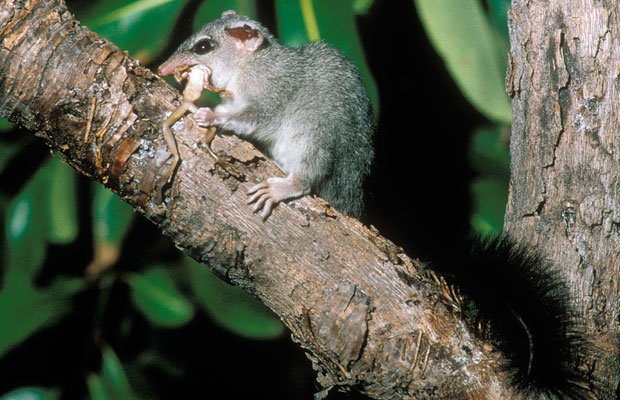Phascogales: the little-known natives

A SURVEY OF brush-tailed phascogales in Victoria’s Wombat State Forest has revealed more adults in the area than last year, suggesting a bumper breeding season ahead.
A survey team from the state’s Department of Sustainability and Environment (DSE) and the University of Ballarat found at least four brush-tailed phascogales (Phascogale tapoatafa) in this year’s survey, along with sugar gliders (Petaurus breviceps) and several agile antechinus (Antechinus agilis). Last year only one phascogale was recorded.
The DSE’s Andrew Arnold is excited by the survey’s results, as it could indicate an imminent rise in population numbers for a species that has been in decline for decades. “Looking at the data we’ve collected on this marsupial so far, there seems to be a very strong link between rainfall averages and phascogale numbers,” he says. “In times of drought, populations dwindle, but we believe that with the recent rainfall we’ve had we’ll see an improvement in numbers.”
Brush-tailed phascogales – what’s in a name?
The DSE surveys as many as 17 sites across Victoria in a long-term monitoring program, with long hours devoted to humanely trapping and recording brush-tailed phascogales. Yet for all the attention they receive, these little marsupials are yet to have their share of the limelight.
“I would say 80 per cent or more of the people I speak to have never heard of phascogales. The group of marsupials they belong to, the dasyurids, include some very well-known species like the Tasmanian devil and the quolls, but phascogales are basically unknown,” Andrew says.
Is it that ‘brush-tailed phascogale’ is too much of a mouthful to be memorable? Or do their shy habits mean they are rarely seen, helping to maintain their low profile?
Phascogale facts
Brush-tailed phascogales have predominantly grey fur with a cream-coloured belly. Growing up to 30cm long, nearly half of their length is taken up by the black, brush-like tail for which they are named.
They live in small populations and require a relatively large home range of up to 100ha for males and 70ha for females.
They breed and shelter in tree hollows, typically in box, ironbark and stringybark forests, venturing out only at night. Their diet consists of insects, spiders and centipedes that they catch in bark, dead trees and leaf litter. Phascogales have also been known to eat the nectar of box and ironbark flowers.
RELATED STORIES

